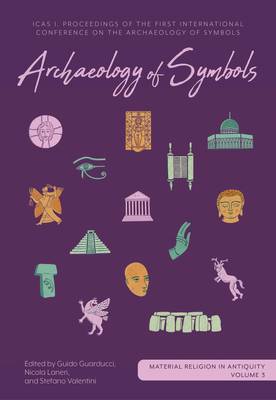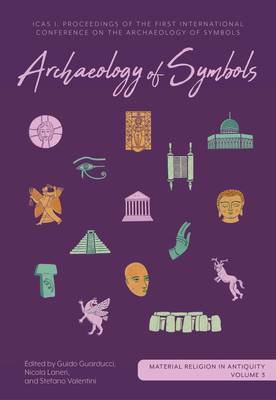
Je cadeautjes zeker op tijd in huis hebben voor de feestdagen? Kom langs in onze winkels en vind het perfecte geschenk!
- Afhalen na 1 uur in een winkel met voorraad
- Gratis thuislevering in België vanaf € 30
- Ruim aanbod met 7 miljoen producten
Je cadeautjes zeker op tijd in huis hebben voor de feestdagen? Kom langs in onze winkels en vind het perfecte geschenk!
- Afhalen na 1 uur in een winkel met voorraad
- Gratis thuislevering in België vanaf € 30
- Ruim aanbod met 7 miljoen producten
Zoeken
Archaeology of Symbols
Icas I: Proceedings of the First International Conference on the Archaeology of Symbols
€ 164,95
+ 329 punten
Omschrijving
These case studies offer new approaches to the analysis and interpretation of symbols in a variety of media and as expressed on a range of objects at different scales.
This third volume in the Material Religion in Antiquity series stems from the First International Congress on the Archaeology of Symbols (ICAS I) that took place in Florence in May 2022. The archaeological process of reconstructing and understanding our past has undergone several reassessments in the last century, producing an equal number of new perspectives and approaches. The recent materiality turn emphasizes the necessity to ground those achievements in order to build fresh avenues of interpretation and reach new boundaries in the study of the human kind and its ecology. Symbols must not be conceived only as allegory but also, and perhaps mainly, as reason (raison d'être) and meaning (culture). They may be considered key elements leading to interpretation, not only in their physical manifestation but by being infused with the gestures, beliefs and intentions of their creators, created in a specific context and with a specific chaîne opératoire.
In this volume a variety of case studies is offered, representing disparate ancient cultures in the Mediterranean and central Europe and the Near East. The thread that connects them revolves around the prominence of symbols and allegorical aspects in archaeology, whether they are considered as expressions of iconographic evidence, material culture or ritual ceremonies, seen from a multicultural perspective. This (and subsequent ICAS) volumes, therefore, aims to embrace all the different aspects pertaining to symbols in archaeology in a specific 'place', allowing the reader to deepen their knowledge of such a fascinating and multifaceted topic, by looking at it from a multicultural perspective.
This third volume in the Material Religion in Antiquity series stems from the First International Congress on the Archaeology of Symbols (ICAS I) that took place in Florence in May 2022. The archaeological process of reconstructing and understanding our past has undergone several reassessments in the last century, producing an equal number of new perspectives and approaches. The recent materiality turn emphasizes the necessity to ground those achievements in order to build fresh avenues of interpretation and reach new boundaries in the study of the human kind and its ecology. Symbols must not be conceived only as allegory but also, and perhaps mainly, as reason (raison d'être) and meaning (culture). They may be considered key elements leading to interpretation, not only in their physical manifestation but by being infused with the gestures, beliefs and intentions of their creators, created in a specific context and with a specific chaîne opératoire.
In this volume a variety of case studies is offered, representing disparate ancient cultures in the Mediterranean and central Europe and the Near East. The thread that connects them revolves around the prominence of symbols and allegorical aspects in archaeology, whether they are considered as expressions of iconographic evidence, material culture or ritual ceremonies, seen from a multicultural perspective. This (and subsequent ICAS) volumes, therefore, aims to embrace all the different aspects pertaining to symbols in archaeology in a specific 'place', allowing the reader to deepen their knowledge of such a fascinating and multifaceted topic, by looking at it from a multicultural perspective.
Specificaties
Betrokkenen
- Uitgeverij:
Inhoud
- Aantal bladzijden:
- 304
- Taal:
- Engels
- Reeks:
Eigenschappen
- Productcode (EAN):
- 9798888570982
- Verschijningsdatum:
- 30/04/2024
- Uitvoering:
- Hardcover
- Formaat:
- Genaaid
- Afmetingen:
- 170 mm x 241 mm
- Gewicht:
- 916 g

Alleen bij Standaard Boekhandel
+ 329 punten op je klantenkaart van Standaard Boekhandel
Beoordelingen
We publiceren alleen reviews die voldoen aan de voorwaarden voor reviews. Bekijk onze voorwaarden voor reviews.








